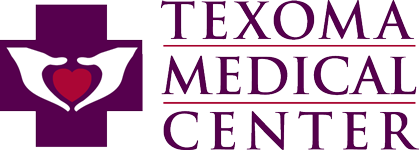Back-to-Back Robotic Surgeries Remove Lung Lesion
 May 31, 2024
May 31, 2024
Daniel Lewis, 56, came to Texoma Medical Center after his primary care physician ordered an X-ray and noticed an abnormality in his lung that turned out to be a lesion. Pulmonologist Anil Singh, MD, and cardiothoracic surgeon Robert J. Wilcott, MD, FACC, performed back-to-back, robotic-assisted procedures to locate and remove it under one anesthesia, the first treatment of its kind performed at the hospital.
A history of medical complications
Lewis was diagnosed with skin cancer in 2012. Radiation therapy at that time was not as precise as it is today, and the treatment damaged other parts of his body. “It burned my jaw, face, neck, throat and the top of one of my lungs,” he says. “Back then they couldn’t pinpoint the area that needed it.”
This and exposure to asbestos in his lifelong career as a contractor caused Lewis many health complications over the following years, resulting in over 30 surgeries, including skin grafts and lesion removals. For these reasons, his primary care physician wasted no time referring him to Dr. Singh at TMC when she located the lung abnormality.
Diagnosing the abnormality
Dr. Singh ran a variety of scans and breathing tests on Lewis, wanting to leave no stone unturned. “When a patient has a history of cancer, it’s standard procedure to examine the whole body to make sure the disease hasn’t spread to anywhere else,” Dr. Singh says. After a PET scan confirmed the abnormality’s location, he conferred with Dr. Wilcott on next steps.
After reviewing the scans, Dr. Wilcott quickly determined robotic-assisted surgery was their best course of action. It was clear to both doctors that whether the abnormality was scar tissue or a lesion, benign or malignant, it needed to be removed as soon as possible. Additionally, they saw an opportunity to try a new method never used at the hospital that would be greatly beneficial to Lewis.
Innovative approach to a time-sensitive issue
A major factor in cancer treatment is time. Patients often wait weeks or more for screening or biopsy results, then schedule a surgery that could take place months later. Lesions grow during this time, and malignant ones that might have been stage one when identified can advance to a higher stage. To help achieve an optimal outcome for Lewis, Drs. Singh and Wilcott chose to locate the lesion and remove it – typically two separate procedures – back-to-back, under one anesthesia.
“This is good for the patient because it means shorter recovery time and less waiting,” Dr. Singh explains. “It can drastically reduce the risk of mortality. In short, sooner is better.”
“This is something we’ve been planning to start at the hospital for a long time, but first we had to acquire the robotic devices and get everyone involved trained and certified to use them.” Dr. Wilcott says. “Not only can it improve outcomes, but it gives patients peace of mind not having to wait for results or the next procedure. One anesthesia, one day, and they get diagnosis and treatment. You can’t beat that.”
Performing the robotic surgeries
For the first procedure, Dr. Singh used the Intuitive® Ion® bronchoscopy platform, an ultra-thin, ultra-maneuverable catheter that is inserted into the airway through the mouth. The device’s 3D imaging accurately maps the constantly changing shape of the lung, which allowed Dr. Singh to pinpoint the lesion’s location and then “mark” it with dye.
The dye allowed Dr. Wilcott to see the lesion through high-definition viewing capabilities of the da Vinci® Xi® surgical system. Using the platform’s robotic arms and tiny instruments that enter the body through dime-size incisions, he was able to completely remove the lesion while saving the majority of Lewis’s lung.
By the time Lewis awoke from the procedures seven hours later, the pathology department had already tested the lesion and determined it to be benign. His nurse had him up and walking four hours later. Lewis stayed in the hospital for five and a half days while his doctors monitored him and ran tests. Once they were satisfied his recovery was going smoothly, he was able to return home.
Awakening to better breathing and benign results
Based on Lewis’s positive outcome, Dr. Wilcott says they plan on performing more back-to-back procedures. “We’re fortunate that the hospital has been so supportive of this endeavor. They deserve kudos for all they did to get this program going,” he says. “That’s going to help our patients in ways previously not possible.”
Lewis is scheduled to return to TMC and see Drs. Singh and Wilcott for breathing tests and other check-ups, but says he feels much better and is breathing well without any coughing. “Both of them were really nice guys and seemed very experienced,” he says of the care he received. “Everybody there was great.”
Individual results may vary. There are risks associated with any surgical procedure. Talk with your doctor about these risks to find out if robotic surgery is right for you.
